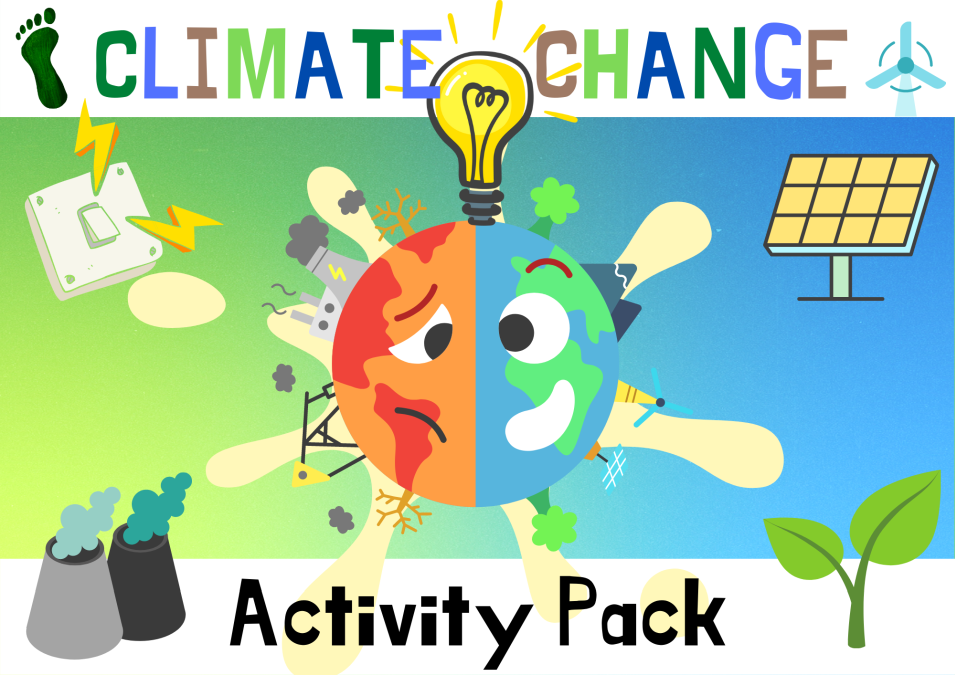Hands-on climate change learning activities encourage students to explore the world by interacting with it directly, which our brains are wired for on a deep level. What classroom activities do come to mind when you reflect on your school days?
I’d assume that for many individuals, the solution involves building something, cooking something, disassembling something, planting something, or pouring one liquid into another… Simply put, getting your hands dirty. So, why not use this effective instructional strategy to teach pupils about one of today’s most serious issues: climate change?
Of course, when choosing climate change activities for students, you want to make sure they complement the topic you’re covering. A well-chosen hands-on lesson may liven up class time, engage students, and help them comprehend the subject matter more thoroughly—plus, it’s sure to be enjoyable. It might also be time-consuming, but we’re here to help. Check out these seven climate change hands-on activities to get started.
Seven hands-on climate change activities
1. Climate Change Research Laboratory
Make climate science more accessible by using concrete images of our warming globe. For example, my NASA Data science lesson plan employs three independent experiments to demonstrate three distinct (but related) aspects of climate change.
In one experiment, students used plastic wrap to trap heat in a container, simulating how atmospheric CO2 traps heat in the air. A second experiment utilizes ice cubes in water cylinders to simulate the influence of melting ice on sea levels.
In a third experiment, students partially cover water with foil to simulate how sea ice keeps our oceans colder by reflecting the sun’s rays. These three climate exercises are excellent for helping middle school students understand the science underlying global warming.
2. Calculate Your Footprint
With Bio interactive’s carbon footprint calculator, you can help your pupils understand their individual effects on the environment. Once you’ve determined which aspects of your lives generate the greatest emissions, you can explore solutions to reduce your footprints.
3. Unit Plan for Climate Heroes: Renewable and Nonrenewable Energy
This interesting Subject To Climate unit plan includes three well-designed hands-on courses that connect art with climate advocacy. Students will look into how artists use their platforms to raise awareness about climate change, learn about what young people throughout the world are doing to combat climate change, and use this information to create portraits of youth climate heroes.
4. Snack-Sized Science: Grow Your Paper!
This plant-able paper DIY from Earth Echo Academy will get youngsters enthusiastic about reuse, recycling, and general resourcefulness. A mother-daughter team teaches how to recycle paper using common household items in a simple and beautiful video. The finished product can be used for writing, drawing, or even growing a garden! Students in elementary school will be thrilled to bring home papers they created themselves.
5. Go to the Forest with It
Why do we take such deep breaths while we exercise? What exactly is the carbon cycle? What is the relationship between trees and air quality? This movement-based Subject To Climate lesson plan will help students answer these issues. Students will exercise for three minutes after monitoring their resting heart rate and breathing patterns and then check to see how their heart rate and breathing patterns have changed. Students will consider what caused the changes in their bodies as they stretch. Children will view a film about the respiratory system before participating in “Take It to the Forest,” a fun and energetic game that teaches students about the carbon cycle and the role that trees play in carbon dioxide absorption. The class concludes with a “stretch and chat” to highlight the critical role that trees play in keeping the air clean and to brainstorm solutions to climate change.
6. Art Activism and Climate Strike – Tell Your Story
What better way to get intimately involved in climate issues than to join the fight for climate solutions? This ACE guide will assist students in Grades 6 and up in creating protest placards pushing for change. The guide was created in anticipation of the 2019 Climate Strike, but it is easily adaptable to other activities.
7. How Do You Grow Your Garden?
Even though most students come into contact with plants daily, they may be unaware of how vital plants are to their communities. Students will determine what plants require to grow and the benefits that plants bring to communities in this Subject To Climate lesson. Students will get their hands dirty as they repurpose everyday materials into planters to build their school garden, and they will test their measurement skills by monitoring and measuring how much their plants grow.
Classroom engagement with climate change and climate solutions can begin. Climate change activities encourage your students to participate actively in the learning process, allowing them to better comprehend global warming and develop strategies to solve it. You can’t theorize your way to a livable planet, after all. To address the climate catastrophe, we must all roll up our sleeves and get our hands dirty.
Send your article to info@jftacademy.com or contact us for more information to publish with us.
